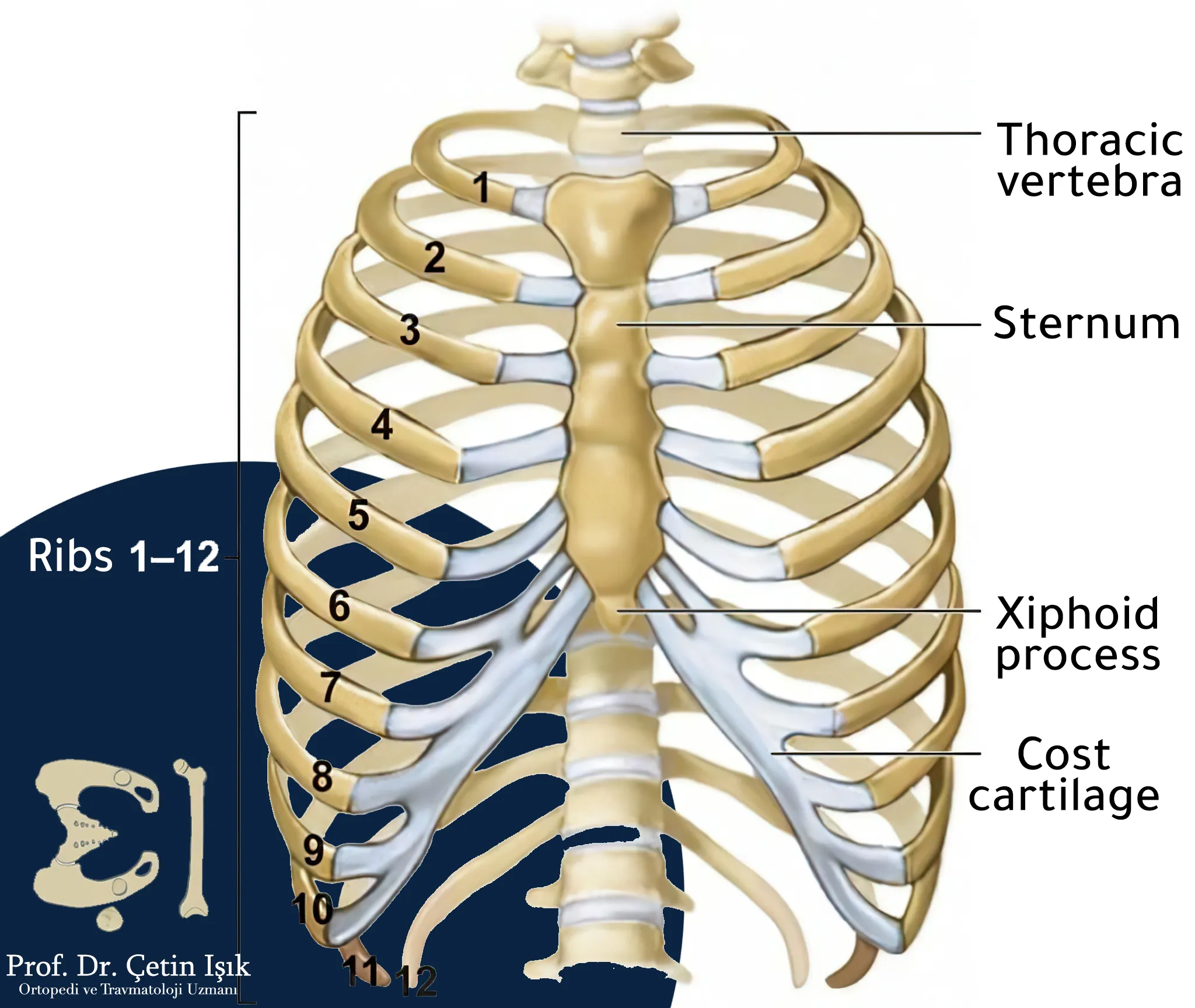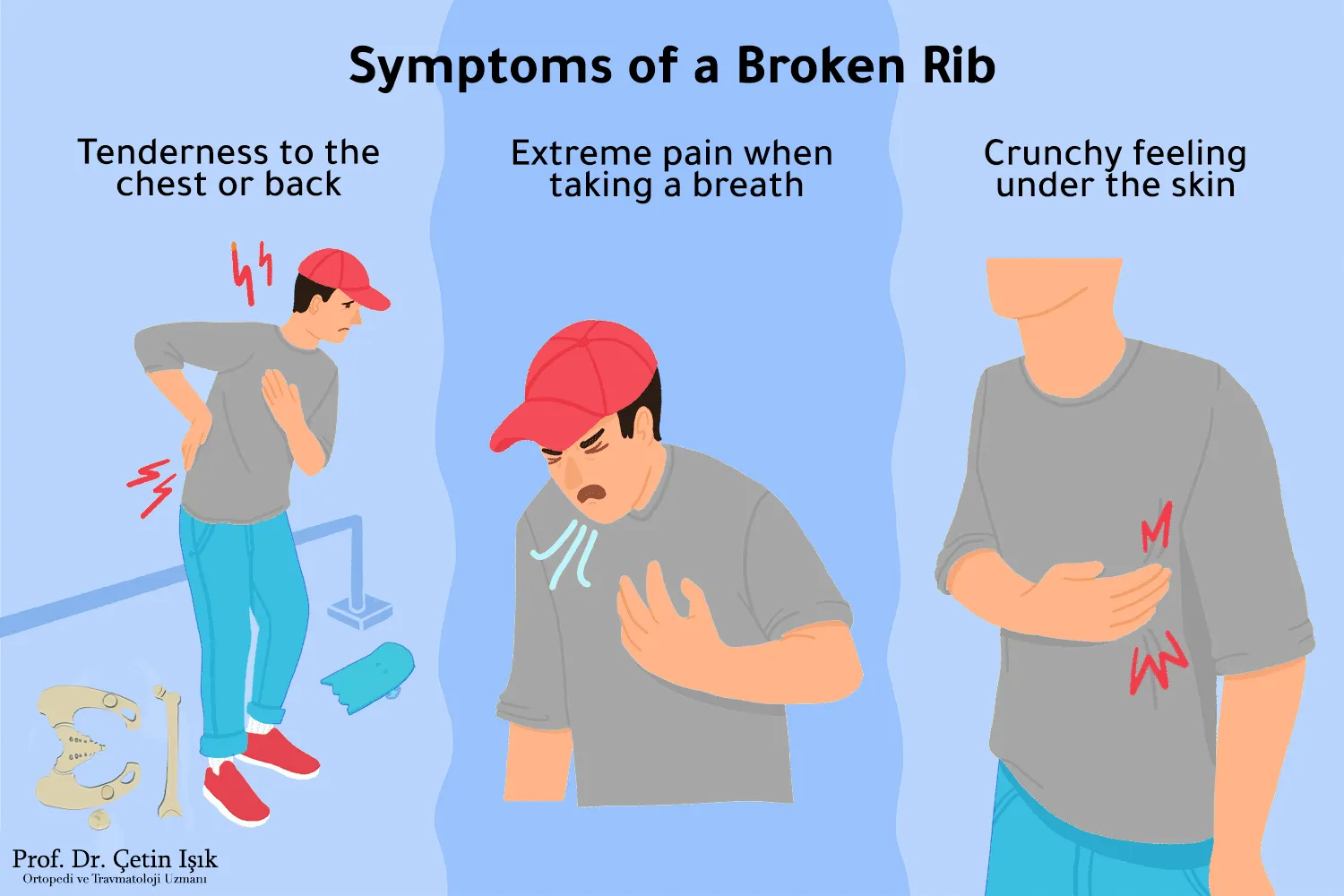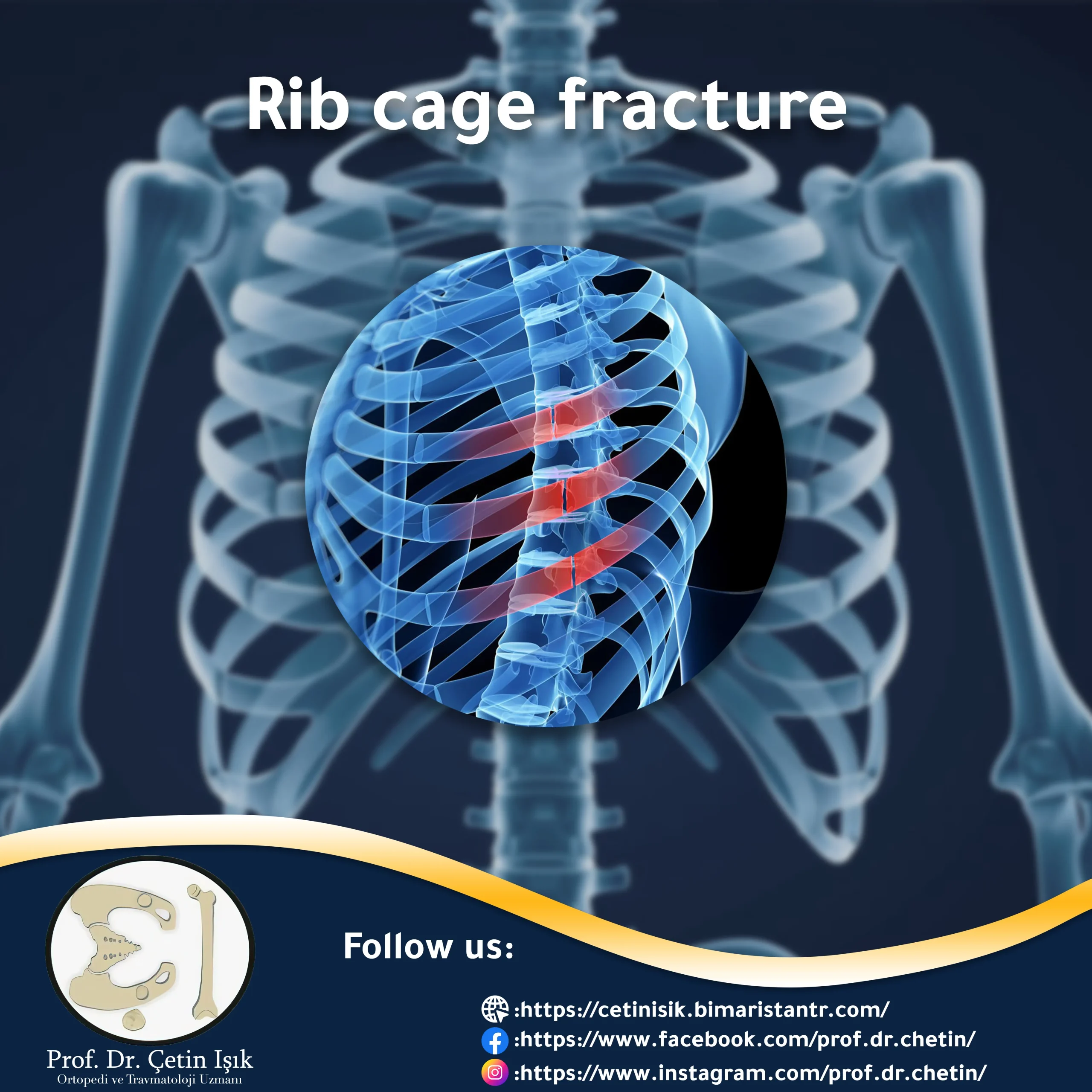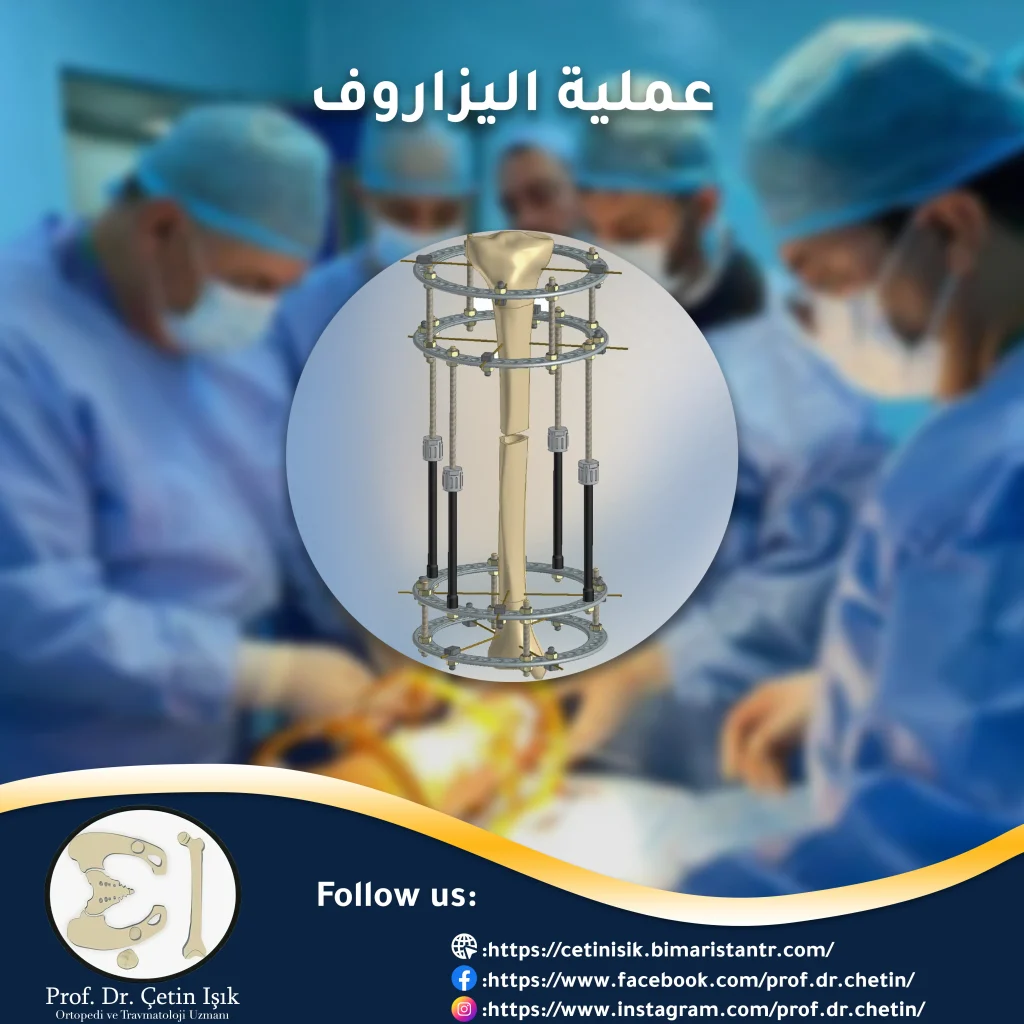Rib cage fracture is breaking one of the breast bones due to a solid blow to the ribs. Rib fractures are among the most common injuries in the rib cage, and treating a rib fracture rarely requires surgery.
The Rib cage fracture It often affects athletes subjected to numerous direct traumas to the chest wall, and it is rare in children due to the flexibility of their bones. The fracture may be in any of the ribs of the chest, but the most vulnerable ribs are from 7 to 10. Surgical treatment is rarely resorted to except when an injury occurs—internal organs resulting from rib cage fractures.
In this article, we will learn what a rib cage fracture is. How does a rib fracture happen? What is the treatment for a broken rib cage?
The most important information about a rib cage fracture
The rib cage is a bony and cartilaginous structure that surrounds the chest cavity and consists of ribs, sternum, and spine. The number of ribs in the rib cage is 12 pairs of ribs, where the first seven ribs (true ribs) are connected directly to the sternum, while the next three ribs (false ribs) are connected indirectly. Direct to the sternum via the costal cartilage, the last two ribs that do not connect to the sternum are called flail ribs.

The rib cage protects the most essential organs of the body. It protects the heart, the large blood vessels, and the lungs and carries the intercostal muscles and the diaphragm. Therefore, the rib cage has an essential role in the breathing process.
A rib cage fracture occurs when one of the bones in the rib cage is broken or cracked. Direct trauma to the ribs in the rib cage is the most common cause of rib fracture, which may affect elderly people with diabetes. Osteoporosis.

Most types of rib cage fractures are nothing but cracks, which are simple and unchanged and do not require surgical treatment.
Types of rib cage fracture
When fractures occur in the rib cage, they are classified according to the shape and degree of severity of the fracture, according to the following:
fracture type
There are several types of fractures, namely, avulsion fracture, comminuted fracture, stress fracture, and floating fracture, the most dangerous kind of fracture. Also, there are alternating fractures where the ends of the broken ribs diverge greatly, unlike non-alternating fractures, in which the extremities of the rib bones do not diverge from each other and remain opposite.
The severity of the fracture
Divide degrees Chest fracture into three degrees, depending on the type of injury, symptoms, and diagnosis, as follows:
mild degree
It is caused by minor trauma, such as colliding with things, and its symptoms are discomfort and discomfort; there are no apparent bruises by touch. It is diagnosed clinically and does not require radiological examinations.
moderate degree
It is caused by a trauma of moderate severity, such as falling on the chest, and its symptoms are apparent pain while inhaling air and the presence of clear swellings. It is diagnosed by seeing signs of a fracture and crack in the rib cage by the doctor, and it needs radiological examinations.
severe degree
It is caused by extreme trauma, such as falling from a great height, and its symptoms are severe and continuous pain with swelling and tenderness during the examination. The doctor diagnoses it, as he listens to the lungs and monitors the movement of the rib cage during breathing, and it needs additional radiological examinations.
Reasons for a broken rib cage
The causes of fractures differ according to the age of the person. A chest fracture may occur either due to bruises or due to some diseases. The most important reasons are:
- A fracture may occur in the ribs of the rib cage due to minor trauma in some elderly people and those suffering from some bone diseases such as osteoporosis or Rheumatoid Arthritis
- Exposure of the bones of the rib cage to strong trauma, such as bruising or fracture of the ribs resulting from a fall or during sports activities that require physical contact
- Multiple fractures of the rib cage may occur during CPR
Symptoms of a rib cage fracture
Many symptoms appear after the fracture, and the rib fracture itself is not the cause. Injury to the internal viscera may lead to the emergence of symptoms. The most important symptoms of rib cage fractures due to a specific accident are:
- Rib cage pain is located in the chest area and is sharp. Rib cage pain increases when breathing deeply, coughing or sneezing, and laughing. It may last for several weeks.
- Difficulty taking a deep breath or breathing is superficial, with a feeling of tightness in the chest and numerous pains when performing some movements
- Coughing and having a fever due to the effusion of fluids inside the lung and the occurrence of pneumonia

Complications of a rib cage fracture
The patient must be treated broken rib Before being exposed to complications, because complications of a broken chest threaten the patient's life, the most important of which is internal bleeding in the chest or injury to the heart muscle, lung, kidney, as well as liver, and spleen, when the lower ribs of the rib cage are fractured.
Rib cage fracture treatment
Treatment is not much different Rib fracture For the treatment of cracked ribs, which often do not need treatment other than taking painkillers. Treatment is divided into two types:
Conservative treatment
can not cure Rib cage crack By gypsum unlike the rest of the fractures such as leg fracture or Hand joint fracture Which are treated through splinting and conservative treatment includes the following:
- Placing an ice pack on the site of the bruise reduces inflammatory swelling and speeds up the process of fracture fusion and the healing time of rib cage bruises.
- Avoid sports activities that may increase the severity of the injury
- Use of analgesic medications A treatment for bone pain or prescription anti-inflammatory drugs
Surgical treatment
Surgical treatment is rarely resorted to treating a rib fracture, except when there are complications, injury to the internal organs, or when the bone does not heal properly, as screws, plates, screws, and rods are used in surgical treatment to return one of the broken rib bones to its normal place and stabilize the rib fractures.
In the end, we conclude our article that the fracture of the rib cage is often a fracture of one of the ribs of the chest, which usually occurs after a strong trauma to the chest wall, which causes severe pain, and the diagnosis is made by using a simple x-ray to determine the rib fractures, or by using a CT scan when an effusion occurs in the side or lung, fractures heal Ribs usually resolve spontaneously with conservative treatment without resorting to surgery.
Sources:
Common questions
Treatment of thoracic fractures is done either through conservative treatment using analgesics, applying an ice pack, and avoiding sports activities, or through surgical treatment, depending on the condition of the injured person and the severity of the fracture.
It may take 12 weeks to break the ribs in some severe fractures because the bones of the chest are constantly moving, but most rib fractures heal within a month or two.
Yes, fractures may occur in one of the bones of the rib cage, especially rib fractures, due to strong trauma to the rib cage during a fall or when suffering from some bone diseases.
Through the x-ray to confirm the chest fractures, after reviewing the doctor when feeling pain, where he performs some clinical examinations and then requests the appropriate x-ray.
Rib cage fractures can be serious when the internal organs are affected or when multiple rib fractures occur and complications occur.




